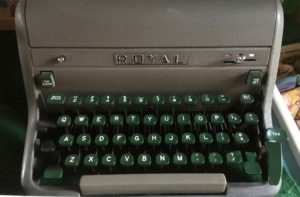 Tomorrow the kids are back a school and my work life is back on schedule. I moved my office over the summer and I had worked in it only a tiny bit because it just didn’t feel like my office. I couldn’t figure it out. I was restless, and edgy and not productive preferring to sit on the couch or in a coffee shop to work.
Tomorrow the kids are back a school and my work life is back on schedule. I moved my office over the summer and I had worked in it only a tiny bit because it just didn’t feel like my office. I couldn’t figure it out. I was restless, and edgy and not productive preferring to sit on the couch or in a coffee shop to work.
Why? My usual reason for discomfort is that change is hard for me, as it is for many folks with ADHD/ADD. Patterns and routines are what keep us moving forward, as much as we might rebel against them sometimes.
Last night as I not sleeping, because I struggle with sleep issues, I was thinking about my production schedule for the week. It occurred to me as I visualized sitting at my desk the arrangement was totally opposite from former office. Many folks would not care if their desk was on the east wall of their office or the west wall, or if the office door was to their left or right, or if they would have their back to the door while working, but it made a difference to me.
The impulse to fix my problem was so strong, only the fear of waking up the rest of my family and then trying to explain to them why three o’clock in the morning seemed like a good time to move furniture stopped me. Today with the help of my very industrious twins we completely rearranged my office in half the time it would have taken me to do it alone.
I haven’t always been this aware of my feelings of discomfort. For years when things were off, I would just ignore them or push through or abandon doing things because of my unidentified negative feelings. Because my kids both struggle with identifying their feelings and being able to articulate what is bothering them, I ask them, especially when they are acting out, or overly upset, “what is wrong?” and “how can you fix it or make it better?” I want them to know they don’t have to settle or deny their discomfort, and that their feelings are valid. Even if other people don’t understand. Especially if other people don’t understand.
Notice I don’t ask “how can I fix it?” I want them to understand what it took me years to figure out. If something is wrong or doesn’t feel right to you, stop and think, take time to check in with yourself. Fix it yourself if you can, and ask for help if you can’t or it’s overwhelming to do it alone. Such a simple lesson and yet so powerful.
Before I had the privilege of having my own office with a door I worked while sitting on the corner of the couch, or at my dining room table. In both places, I did little things that made it mine, and comfortable, even if it was only during the time I used them.
Are there things in your life that are making you uncomfortable or are the source of negative feelings? Have you abandoned your writing or creative space because it didn’t feel right or you were unable to be productive? Or have you never been able to settle into a creative space? Take a moment to check in with yourself, and then take the time to make your space your own, even if it’s a corner of a room or a place at the kitchen table do what you need to do to be productive and create. Now go make/write/do something amazing.
Brenda Murphy writes erotic romance. Her novel, Knotted Legacy, made the 2018 The Lesbian Review’s Top 100 Vacation Reads list. She loves sideshows and tattoos and yes, those are her monkeys. When she is not loitering at her local library she wrangles two kids, one dog, and an unrepentant parrot. She reviews books, blogs about life as a writer with ADHD and publishes photographs on her blog Writing While Distracted. You can find her on Facebook by clicking here. Sign Up for her email list here www.brendalmurphy.com
Books available at






